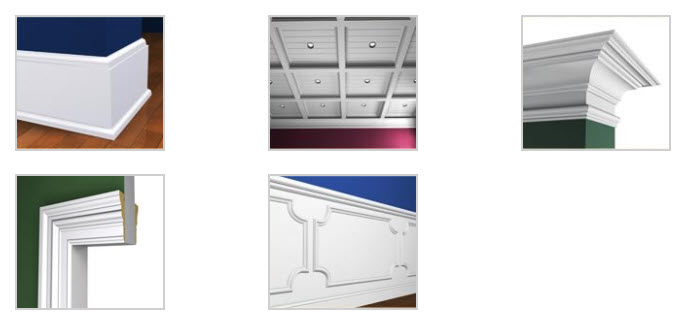Architectural Mouldings
Did you know you can add decorative mouldings to any room and it doesn’t have to be expensive or difficult?
At Beautiful Bathrooms NJ, we understand that architectural mouldings are a chic addition to any home’s interior design. Mouldings can be practical or decorative, depending on design placement, and the moulding’s profile can help enhance your room’s aesthetic. Some mouldings may give your room an understated elegance, while others might work to enhance historical charm. Whether it’s a historic renovation or a new home we understand the different types of architectural moulding and how to layer and style each element to ensure that your room’s mouldings complement the architectural style of your home, and visa versa.
We will help you design which architectural mouldings will compliment your homes interior. The type of moulding is dependent on two factors: where the moulding is placed and the moulding’s profile, or design. All moulding will have a name for where it is placed, as well as the type of profile being used. Both of these factors will influence how your architectural molding fits into or actually create your rooms style.

Incorporate New Architectural Moldings
There are five primary places that you might find existing decorative mouldings in a room, or incorporate new architectural moldings in a room. Some have functional purposes, and others are purely decorative. They are crown moulding, chair rail, base and shoe mouldings, and door and window casings.
View Mouldings
• Crown Moulding – Crown moulding is found where the wall meets the ceiling. This type of architectural moulding is generally used solely for decoration, but it can also hide any slight imperfections that might lurk around the top edges of your room. Crown mouldings, can also ease the transition from wall to ceiling, and adds style and elegance to any space.
• Chair Rail Moulding – This type of architectural moulding is typically placed where any chairs might rub against the wall. Its practical function is to avoid chair scuffs on the wall, but it can also add a touch of elegance to your room. You don’t have to use the molding for its functional purpose, as it is a common decorative element as well, adding scale and detail to an otherwise blank wall.
• Base Moulding – Base moulding is found where your wall meets the floor. Also capable of hiding imperfections, this type of moulding helps set the aesthetic for the room. Base molding protects the bottom of the wall, while adding a visual base to anchor the space.
• Shoe Moulding – Shoe moulding is meant to prevent walls from being scuffed by shoes. It is a complement to your base moulding, adding a bit more protection at the base of your room, shoe moulding also conceals the joint between flooring and baseboard materials, and can add another layer of detail to the mouldings in the room.
• Door and Window Casings – Add style, design and detail to simple windows and door surrounds. As with other types of mouldings, the style of decorative moulding around doors and windows can help decide the decorative character of your room.
At Beautiful Bathrooms NJ, we’ll help guide you through the entire process..!
Get started with a free, no obligation consultation by calling 732-751-9129 today.
